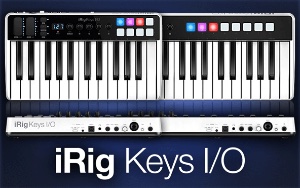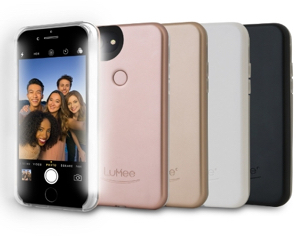An Apple patent (number 20100156818) for a multi touch with haptics has appeared at the US Patent & Trademark Office. It hints at upcoming iPhones, iPod touches and iPads that would accept a number of physical feedback responses through haptic feedback.
Haptic technology, or haptics, is a tactile feedback technology that takes advantage of a user’s sense of touch by applying forces, vibrations, and/or motions to the user. When referring to mobile devices, this generally means the use of vibrations from the device’s vibration alarm to denote that a touchscreen button has been pressed.
Methods and systems for processing touch inputs are disclosed in the Apple patent. The invention in one respect includes reading data from a multi-touch sensing device such as a multi-touch touch screen where the data pertains to touch input with respect to the multi-touch sensing device, and identifying at least one multi-touch gesture based on the data from the multi-touch sensing device and providing an appropriate multi-haptic response. The inventors are Bobby Burrough and Benjamin J. Pope.
Here’s Apple’s background and summary of the invention: “Multi-touch devices have advantages over conventional single point sensing touch devices in that they can distinguish more than one object (finger) in contrast to single point devices that are simply incapable of distinguishing multiple objects. In most cases, multi-touch devices monitor a sensing surface for a touch or near touch, and when a touch occurs determines the distinct areas of contact and identifies the contacts via their geometric features and geometric arrangement. Once identified or classified, the contacts are monitored for various motions, actions or events. The contacts and motions thereof are then converted into inputs for controlling some aspect of an electronic device.
“Multi-touch devices can be embodied in various forms including but not limit to standard touch pads, large extended palm pads, touch screens, touch sensitive housings, etc. Furthermore, multi-touch devices can be placed in various electronic devices including but not limited to computers such as tablet computers, laptop computers, desktop computers as well as handheld computing devices such as media players (e.g., music, video, games), PDAs, cell phones, cameras, remote controls, and/or the like. The multi-touch devices can also be placed on dedicated input devices such as touch screen monitors, keyboards, navigation pads, tablets, mice, and the like. Essentially, multi-touch devices can be applied to any surface, and can be found in any consumer electronic product that requires inputs.
“Since multi-touch devices provide a number of inputting operations at a single location (input surface), inputting with multi-touch devices can be very efficient. The user can maintain their hand(s) at the multi-touch surface without having to move their hand(s) to address other input devices. For example, conventional systems typically include a keyboard and a separate mouse. In order to use the mouse, the user must move their hand from the keyboard and onto the mouse. In order to keyboard efficiently (both hands), the user must move their hand from the mouse to the keyboard. This inputting sequence is very inefficient. For one, only one device can be used effectively at a given time.
“For another, there is wasted time between each inputting step. In contrast, with multi-touch surfaces the user can generate both static commands (e.g., keyboarding) and manipulative commands (e.g., tracking) from the same location and at the same time. The user therefore does not have to move their hands to perform different inputting tasks. The user simply provides different chords or finger motions to generate a number of inputs either sequentially or simultaneously. In one example, the user can provide key commands with taps at specific locations of the multi-touch surface while allowing tracking from all locations of the multi-touch surface.
“However, research has shown that providing the multi-touch surface with the ability to provide physical (haptic) feedback makes the multi-touch experience even more efficient and realistic to the user. For example, physical keyboards provide a physical indication (a bump, for example) indicative of the home key. This physical sensation can not be provided by a conventional multi-touch system thereby forcing the user to visually locate the home key thereby making keyboard use less efficient and fatiguing.
“However, by providing a physical facsimile of the home key bump using an actuator that provides a physical sensation to the user providing an approximate representation of the bump, the user’s experience of the MT keyboard (and any multi-touch system for that matter) can be more realistic and therefore more enjoyable.
“The invention relates, in one embodiment, to an apparatus and method for providing multi-touch haptic feedback. The apparatus includes, at least, a touch pad having a touch sensitive surface arranged to receive a user provided multi-touch event associated with at least two different locations on the touch sensitive surface, a multi-touch detection mechanism operatively coupled to the touch sensitive surface that detects the multi-touch event and generates a corresponding a multi-touch signal, and a plurality of haptic feedback devices operatively coupled to the multi-touch detection mechanism and the touch sensitive surface cooperatively arranged to concurrently provide tactile feedback at each of the at least two different locations on the touch sensitive surface in response to the multi-touch signal wherein the tactile feedback at each of the at least two different locations are discreet from one another.
“When the multi-touch signal indicates that the multi-touch event is a dynamic multi-touch event indicating a change in the multi-touch event, then the tactile feedback at each of the at least two different locations is updated to reflect the change in the multi-touch event. It should be noted that in some cases the tactile feedback event can be different for each of the at least two different locations.
“The invention relates, in another embodiment, to a multi-touch haptic mechanism. The multi-touch haptic mechanism includes, at least, a touch pad having a touch sensitive surface arranged to detect a user touch event at substantially any location on the touch sensitive surface and a plurality of independent haptic devices operatively coupled to the touch sensitive surface each providing a corresponding type of tactile feedback thereby providing a tactile feedback at substantially any location on the touch sensitive surface at which the user touch event has occurred, wherein each of the plurality of independent haptic devices only responds to the user touch event in one or more associated regions of the touch sensitive surface. When at least two of the plurality of independent haptic devices cooperate to provide a type of haptic response that is different than that type provided by either of the at least two independent haptic devices separately.
“The invention relates, in another embodiment, to an integrated device arranged to act as both a force sensing device and a haptic feedback device. The device includes, at least, a touch sensitive surface, a controller unit, and a mechanical actuator coupled with the controller unit and the touch sensitive surface. The integrated device acts as the force sensing device by generating an output voltage in direct proportion to a force applied to the mechanical actuator by a user touching the touch sensitive surface, sensing the output voltage by the controller unit and converting the sensed output voltage to an indication of the applied force.
“Only when the sensed output voltage exceeds a voltage threshold level does the integrated device act as the haptic feedback device by halting the sensing of the output voltage by the controller unit activating the mechanical actuator by the controller unit, wherein the activated mechanical actuator imparts a physical force to the touch sensitive surface that results in a vibro-tactile response (subcutaneous tissue activated) felt by the user commensurate with the force applied by the user.
“The invention relates, in another embodiment, to an electronic device. The electronic device includes, at least, a touch pad having a touch sensitive surface arranged to process a user touch event and a plurality of haptic feedback devices each of which is operatively coupled to the touch sensitive surface and each responding to the user touch event only in a specific region of the touch sensitive surface and arranged to provide tactile feedback singly or in combination with others of the plurality of haptic feedback devices in response to the user touch event. When the touch sensitive regions of at least two of the plurality of haptic devices overlap, if the user touch event occurs in the overlapping region, then the at least two haptic devices cooperate to provide a combined haptic feedback response based upon the location in the overlapping region of the user touch event.
“The invention relates, in another embodiment, to an electronic device. The electronic device includes, at least, a touch pad having a touch sensitive surface arranged to receive a user touch event provided by a user, a controller coupled and in communication with the touch pad arranged to at least analyze the user touch event and/or a state of the touch pad and based upon the analysis provide a user touch event signal in response to the user touch event, and at least one haptic device operatively coupled to the controller arranged to receive the user touch event signal, wherein the at least one haptic device responds to the user touch event signal by providing an appropriate haptic feedback response to the user based upon the analysis provided by the controller.
“In one embodiment, the touch sensitive surface is arranged to receive different types of user touch events each being characterized by an amount of pressure applied on the touch sensitive surface by a user and at least one haptic device operatively coupled to the touch sensitive surface arranged to provide a specific type of tactile feedback corresponding to the amount of pressure applied to the touch sensitive surface by the user.
“It should be noted that in each of the embodiments described above, the methods can be implemented using a touch based input device such as a touch screen or touch pad, more particularly a multi-touch touch based input device, and even more particularly a multi-touch touch screen. It should also be noted that the gestures, gesture modes, gestural inputs, etc. can correspond to any of those described below in the detailed description. For example, the gestures can be associated with zooming, panning, scrolling, rotating, enlarging, floating controls, zooming targets, paging, inertia, keyboarding, wheeling, and/or the like.”




